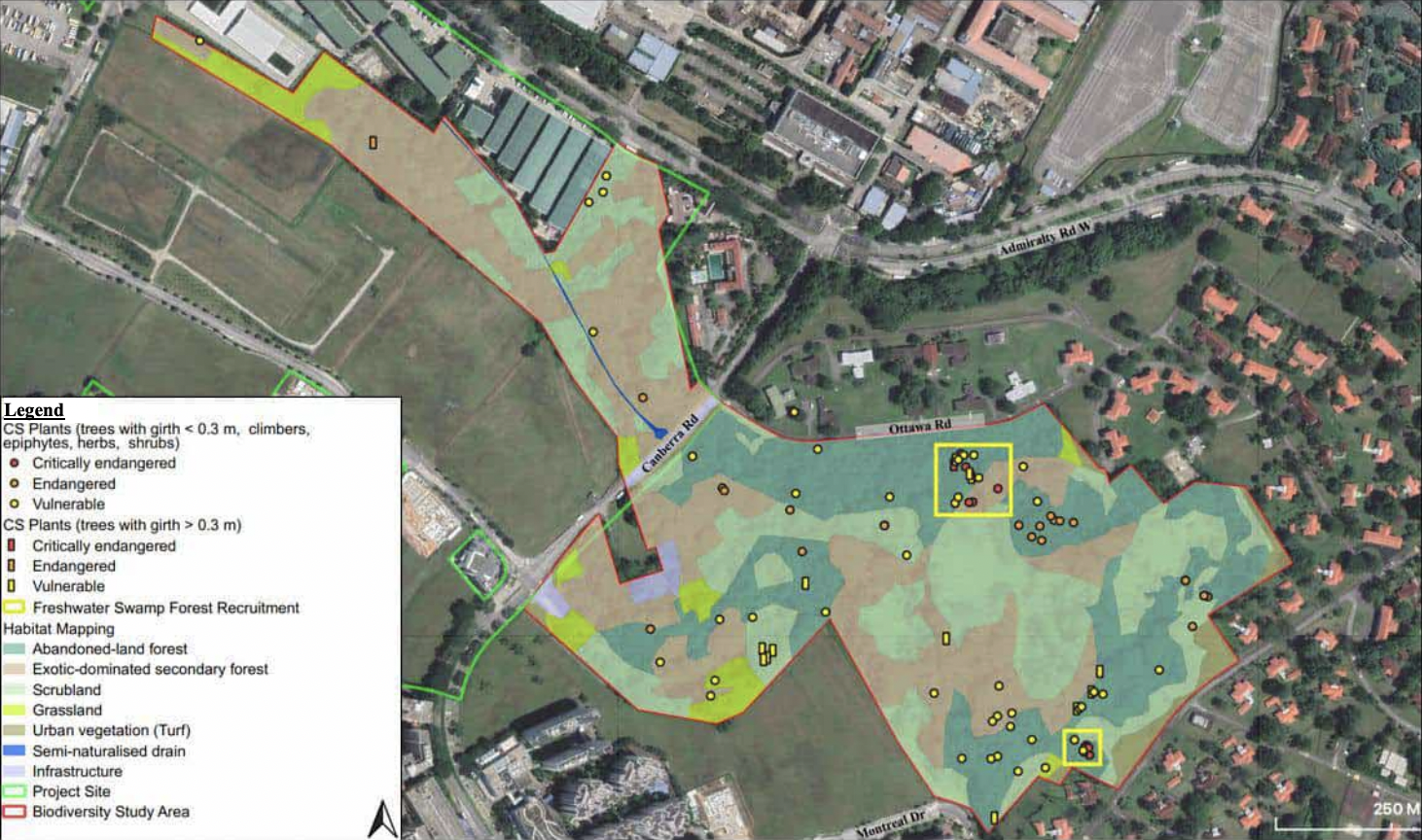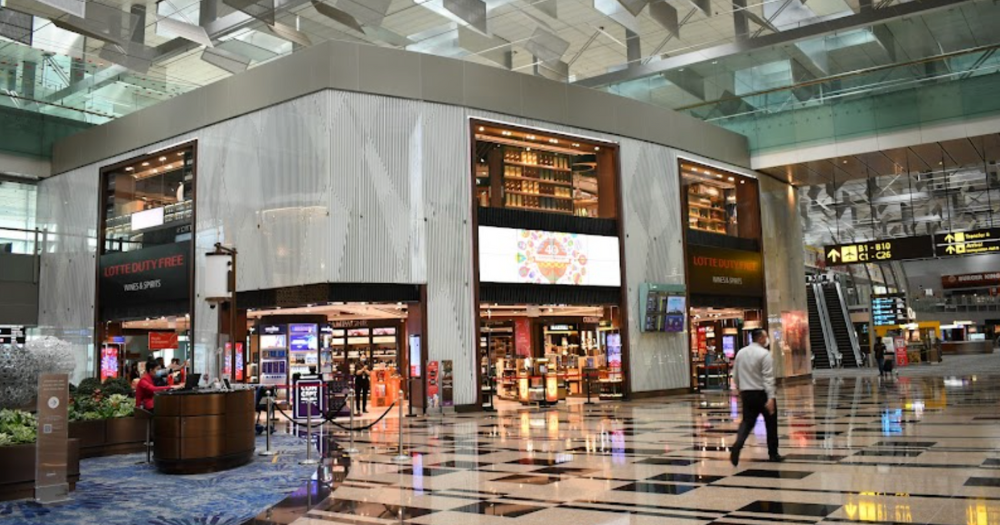Forests at Sembawang & Woodlands to be cleared for housing inhabited by endangered species like pangolins
Two EIAs were conducted.

Forested areas in Sembawang North and Woodlands, which are slated to be cleared for housing, have been found to contain endangered species.
This was discovered after two environmental impact assessments (EIA) were commissioned by the Housing Development Board (HDB) and conducted by Aecom at the two spaces.
Around 8,000 BTO flats and 2,000 private housing units upon development are expected to be built at Sembawang North, HDB announced in October earlier this year.
Plans for the Woodlands site have yet to be announced.
Woodlands
The 7.27ha project site is marked out by a red outline in the image below, with green areas indicating native-dominated secondary forest, abandoned land forest, and scrubland.
 Photo from HDB
Photo from HDB
The EIA for this site found 195 species of flora in the area, 89 of which are native. Of these, 10 species of conservation significance were recorded.
Meanwhile, 95 fauna species were recorded, with the majority being birds and butterflies.
Four species across three taxa — birds, mammals and butterflies, were found to be of conservation significance.
These are the Swinhoe's white-eye, cave nectar bat, sky blue butterfly and common birdwing butterfly.
The EIA thus recommended retaining a small portion of the forested area (marked in red in the image below).
This section will comprise 90 per cent of the existing secondary forest, and includes a 15m buffer.
"This helps to reduce the impact for habitat loss, plant mortality, loss of/reduction in habitats and food sources and overall connectivity for the fauna species," the EIA stated.
 Photo from HDB
Photo from HDB
Other recommendations set out in the EIA to minimise the impact on biodiversity include:
- Planting flora species that will attract birds and butterflies, as this can "reduce the impact of loss of/reduction in habitats and food sources."
- Transplanting or salvaging rare flora species that would be impacted.
- Inspection of vegetation for wildlife or their nests by an ecologist before it is cleared.
- Shepherding fauna during the construction phase to an area where they can leave by themselves, or through rescue and relocation if necessary.
- Implementing road calming measures such as speed bumps or speed limits of 15km/h to 20km/h to minimise roadkill accidents.
Sembawang North
The Sembawang North project site is much larger than the Woodlands one, and "is one of a few remaining large and continuous vegetated patches in the urban matrix of Sembawang region", the EIA noted.
The 53ha site, named N4, consists of urbanised areas, construction worksites, managed turf vegetation and forested areas.
Adjacent to it is a patch of forest called N5. While N5 has been zoned for residential use, it is not part of the project site.
 Photo from HDB
Photo from HDB
The EIA found that 33.5 per cent of the site consists of exotic-dominated secondary forests, with the rest comprising scrubland, grassland, abandoned-land forests, and semi-naturalised drains.
There are a total of 240 species of flora in the area.
Five species of conservation significance were discovered in N4, and 17 in N5. Five Albizia trees with a raptor's nest were also observed in N5.
In both N4 and N5, there were 212 fauna species, with 13 of conservation significance.
These included the endangered black-crowned night heron, the critically endangered straw-headed bulbul, and the critically endangered Sunda pangolin.
The EIA highlighted that the N5 forest could serve as a "stepping stone habitat" due to its position and larger size, helping wildlife move between the Central Catchment Nature Reserve and the forested areas of Simpang.
As such, only a small section of N5 next to Canberra Road will be affected, HDB told The Straits Times.
 Photo from HDB
Photo from HDB
The mitigation measures recommended for the Sembawang site are similar to those for Woodlands.
Feedback forms open
The public can provide feedback to HDB via online forms from Nov. 13 to Dec. 10.
"Through our engagements and with feedback received from Interest Groups, HDB will carefully review our plans and take appropriate mitigation measures as necessary as we develop the site sensitively," HDB stated on its website.
Such feedback will "help [HDB] achieve the best balance of land uses for all Singaporeans".
Top photo from Canva and HDB
MORE STORIES





















